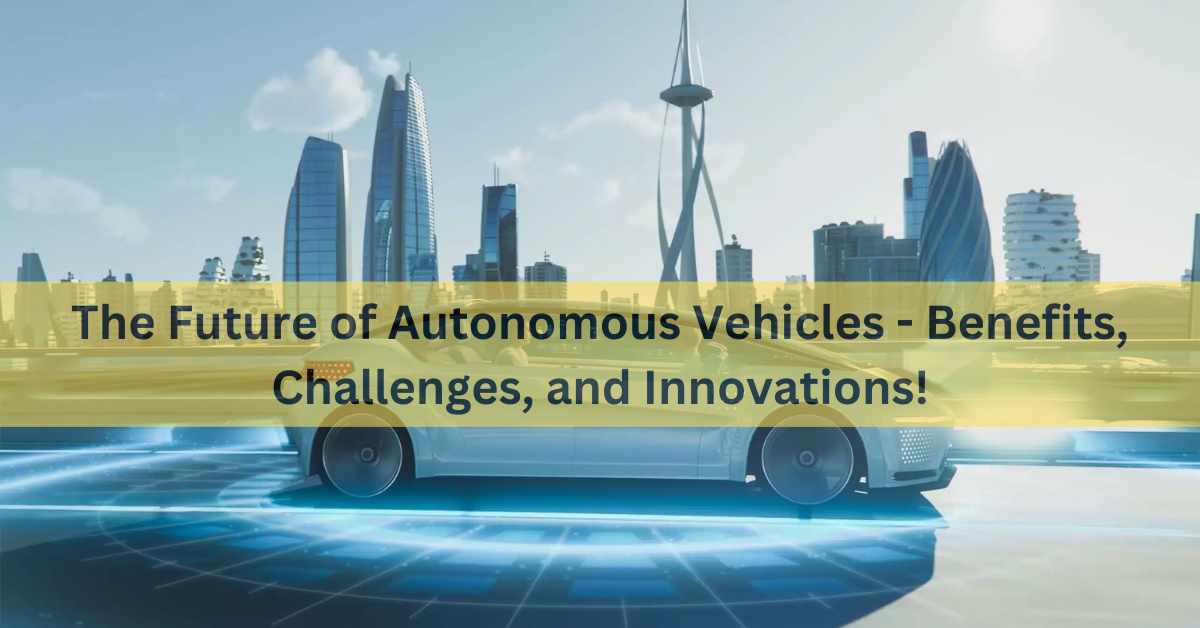Autonomous vehicles (AVs) represent a revolutionary advancement in transportation technology, poised to reshape mobility and urban landscapes globally. This article explores the promising benefits, current challenges, and ongoing innovations shaping the future of autonomous vehicles.
Contents
Understanding Autonomous Vehicles
Autonomous vehicles, often referred to as self-driving cars or driverless vehicles, utilize advanced sensors, AI algorithms, and machine learning to navigate and operate without human intervention:
- Levels of Automation: Autonomous vehicles are categorized into levels ranging from Level 0 (no automation) to Level 5 (full automation), where the vehicle can perform all driving tasks under all conditions.
- Sensor Technologies: Utilizes cameras, radar, lidar (light detection and ranging), GPS, and onboard computers to perceive and interpret the vehicle’s surroundings.
- Safety Systems: Incorporates redundant systems, fail-safe mechanisms, and real-time data processing to ensure safe navigation and collision avoidance.
Benefits of Autonomous Vehicles
The adoption of autonomous vehicles promises significant advantages for individuals, businesses, and society:
- Enhanced Safety: Reduces human error, the leading cause of accidents, through precise sensing and real-time responsiveness to road conditions and potential hazards.
- Improved Efficiency: Optimizes traffic flow, reduces congestion, and minimizes travel times through coordinated vehicle-to-vehicle (V2V) and vehicle-to-infrastructure (V2I) communication.
- Accessibility and Mobility: Increases mobility options for seniors, people with disabilities, and underserved communities by providing reliable and affordable transportation solutions.
- Environmental Impact: Enhances fuel efficiency, reduces emissions, and promotes sustainable transportation practices, contributing to environmental conservation efforts.
Challenges in Autonomous Vehicle Development
Despite the promising benefits, several challenges must be addressed for widespread adoption of autonomous vehicles:
- Technological Limitations: Overcoming technical hurdles related to sensor accuracy, AI reliability, complex road scenarios, and adverse weather conditions.
- Regulatory Frameworks: Establishing comprehensive regulations, safety standards, liability frameworks, and legal considerations to govern autonomous vehicle operations.
- Public Perception and Trust: Building public trust, addressing concerns about safety, cybersecurity risks, data privacy, and ethical implications of autonomous technology.
- Infrastructure Readiness: Upgrading infrastructure, road signage, communication networks, and support systems to accommodate autonomous vehicle capabilities.
Innovations Shaping the Future
Ongoing advancements and innovations are driving the evolution of autonomous vehicles:
- AI and Machine Learning: Continual improvements in AI algorithms for real-time decision-making, object recognition, and adaptive learning capabilities.
- 5G Connectivity: Integration with 5G networks for ultra-low latency, high-speed communication, and enhanced V2V/V2I connectivity.
- Simulation and Testing: Utilizing virtual simulations, augmented reality (AR), and digital twins for extensive testing, validation, and training of autonomous systems.
- Vehicle-to-Everything (V2X) Communication: Enabling seamless communication between vehicles, pedestrians, infrastructure, and smart city platforms to enhance safety and efficiency.
The Future Outlook
The future of autonomous vehicles is poised for transformative growth and widespread adoption:
- Urban Mobility Solutions: Deploying autonomous shuttles, taxis, and delivery vehicles to enhance urban mobility, reduce traffic congestion, and improve last-mile connectivity.
- Commercial Applications: Integrating autonomous technology in logistics, freight transportation, and public transit systems to streamline operations and optimize supply chain efficiency.
- Ethical Considerations: Addressing ethical dilemmas, societal impacts, job displacement concerns, and equitable access to autonomous mobility solutions.
Conclusion
Autonomous vehicles represent a paradigm shift in transportation, promising safer roads, enhanced mobility, and sustainable urban development. By overcoming technological challenges, addressing regulatory frameworks, and fostering public trust, autonomous vehicles have the potential to revolutionize the way we travel and interact with our cities. Embrace the future of autonomous vehicles and discover the transformative benefits of this groundbreaking technology.


